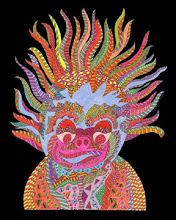Indian Rupee, Stocks Complete Annual Decline on Growth Concerns
Email | Print | A A A
By Anoop Agrawal
Dec. 31 (Bloomberg) -- India's rupee completed its biggest annual drop
since 1991 as a global financial crisis prompted overseas funds to
favor safer bets than emerging-market assets. Stocks dropped by a
record this year.
The currency reached an all-time low this month against the dollar as
the U.S., Japan and Europe entered their first simultaneous recession
since World War II, fanning concern India's growth will slow. The
rupee slid 19.2 percent, the second-worst performance among the 10
most-active Asian currencies outside Japan. The benchmark Bombay Stock
Exchange's Sensitive Index, or Sensex, fell 52.5 percent.
"It has been ecstasy to agony for the rupee this year," said K.V.
Mallik, treasurer at state-owned UCO Bank in Kolkata. "The outlook
isn't any better as it appears far from certain as to when the
financial markets will stabilize. I expect the rupee to be under
pressure in the next few months."
The rupee closed at 48.775 against the dollar at the 5 p.m. in Mumbai,
versus 39.415 at the end of 2007 and 48.485 yesterday, according to
data compiled by Bloomberg. It touched a record low of 50.615 on Dec.
2. Mallik forecast it may weaken to 49.5 next month.
The currency may end 2009 at 48, according to the median estimate of
analysts in a Bloomberg News survey.
Foreign funds dumped emerging-market assets, including Indian
equities, as $1 trillion of credit-market losses triggered the failure
of Lehman Brothers Holdings Inc. in September and led to a freeze in
global lending.
Offloading Equities
Overseas investors bought a record $17.2 billion of Indian shares in
2007, helping the rupee rally 12.3 percent, the biggest annual gain
since at least 1974. It touched 39.185 a dollar on Nov. 7, 2007, the
highest in almost a decade. Funds have since offloaded a record $13.4
billion in 2008, according to Securities and Exchange Board of India's
data.
The Sensex had its biggest annual drop since at least 1980, when data
on the gauge is available.
For the year, Hindustan Unilever Ltd., the nation's biggest maker of
household products, was the only stock on the Sensex to rise, gaining
17 percent. Jaiprakash Associates Ltd., India's biggest builder of
dams, fell the most on the measure, with an 81 percent slump.
India's exports dropped in October for the first time since 2001 and
industrial production posted its first decline in 15 years, official
figures show. The $1.2 trillion economy may expand as little as 7
percent in the year through March, the slowest pace since 2003, the
finance ministry said in its mid- year review on Dec. 23.
"Concerns over the fundamentals of the economy are mounting, which is
strong enough to keep investors at bay in the near term," UCO Bank's
Mallik said.
In an attempt to counter slowing growth, the Reserve Bank of India cut
its overnight lending rate, or repurchase rate, three times since Oct.
20.
Dollar Sales
The central bank's dollar sales in October exceeded purchases by a
record $18.7 billion to curb the decline in the local currency. It
sold a net $5.25 billion this year through October.
"It is only the central bank that can make a significant change to the
rupee's trend," said Paresh Nayar, chief of currency and fixed-income
trading at Development Credit Bank Ltd. in Mumbai. "In 2009, I think
the capital flows on their own won't impact the exchange rate beyond a
point."
India's foreign-exchange reserves have declined by $62.2 billion from
an all-time high of $316.2 billion reached in May, indicating it sold
dollars.
Central banks intervene in currency markets to influence exchange
rates by arranging sales or purchases of dollars. The Reserve Bank of
India has sold dollars for two straight months.
The rupee may trade between 46.5 per dollar and 50.1 in 2009, Nayar said.
Futures Contracts
Non-deliverable forward contracts showed traders increased bets for
further weakness in the rupee. Offshore contracts indicate traders are
betting the rupee will weaken more than 5 percent to 51.38 per dollar
in a year.
Forwards are agreements in which assets are bought and sold at current
prices for future delivery. Indian rupee forwards traded overseas are
non-deliverable, meaning they are settled in dollars rather than the
local currency.
India introduced exchange-traded currency futures this year to enable
investors to hedge their foreign-exchange risk, a move aimed to
complement currency forwards and options agreements. Trading in all
derivatives is restricted to the dollar-rupee pair.
The National Stock Exchange of India Ltd. was the first to offer the
derivatives on Aug. 29, followed by the Bombay Stock Exchange Ltd. and
the Multi Commodity Exchange of India Ltd. Futures contracts are
agreements to buy or sell a currency, commodity or other financial
product at a later specific price and date.
To contact the reporter on this story: Anoop Agrawal in Mumbai at
aagrawal8@bloomberg.net.
Last Updated: December 31, 2008 07:37 EST
